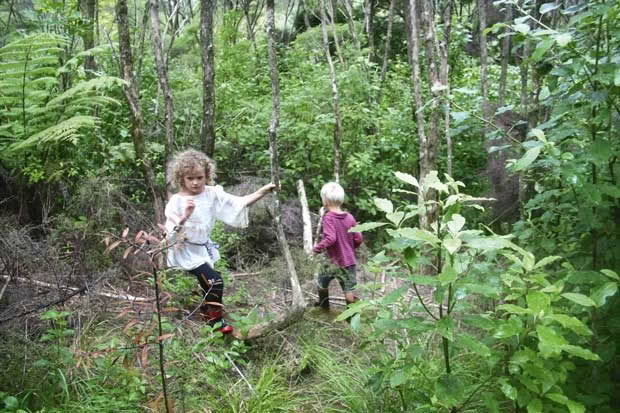Polly Greeks’ Blog: Solo rat-trapping duty
Left in sole charge of the children and the land, Polly connects with the wildness within.
After seven years of off-grid living, I’m not the Earth woman I’d hoped to become. During the seasons when James has been gardener-in-chief, the kitchen has overflowed with homegrown produce and we’ve almost wept at the sight of another 30 courgettes growing stout in the sun. This year though, it’s my turn at the raised-bed helm and the great horn of cornucopia has upturned, tipping out a handful of beans, the odd tomato, bolting lettuce and an occasional wizened beetroot.
James, who initially admired my plan to let the gardens self-seed, has left the extensive weeding to me. Actually he has left altogether – away for some months on a contract. Mostly, I’m managing fine. I’ve long-since learnt how to empty the compost toilet without dry-retching; I can repair the pull-cord on the generator if it snaps and split kindling as thin as matchsticks, but I’ll need to step up if the water system gets knocked out in a storm. Traditionally it’s James who fixes the problem. He’s also the one to chainsaw up trees when they fall on the road and he’s kept our house surrounded in a deadly ring of hair-triggered traps to hold bush rats at bay.
“You’ll have to take on that job,” he warned upon departing. “This is when they start coming in.”

We take our rat trapping seriously, engaging DOC 200 predator traps that are so strong they can cut a hefty rat clean in half when they snap. For that reason, it’s not a good idea to hold the spring-jaws open with one’s feet, but I was trying to remove my first fatality at the time, and required both hands, clad in plastic bags, to pick up the pieces. When the rat’s tail fell off, distracting me somewhat, the trap slammed shut on my toes. My operatic note brought the children running. “That’s not how Dad does it,” Vita pointed out as I checked for broken bones.
It’s probably not how Earth women do it either but I’m realizing I may not be the archetypal earthen mama: that strong and capable figure who not only raises happy, healthy children but also tends crops of buckwheat, hemp and quinoa, fells firewood trees, milks goats and bottles up a year’s worth of preserves from her food forest before spinning wool to knit socks.
Luckily, you don’t have to be skilful on the land to enjoy it, and it’s with great pleasure that I’m mixing ‘wild schooling’ into the children’s home schooling. The garden and surrounding forest has become as much a classroom as our kitchen table. Outdoors we read clouds and seasons and animal trails. Arithmetic is the counting of fruit divided by fungi and beak-burrowing birds. We write on pages of mud and sand. It’s a realm governed by the unexpected. The wind takes over the class for an hour; the silent moon opens up conversations; a cache of blackberries beckons us off our path.
But wild schooling is about more than discoveries in nature. Wildness is a quality we’re born with, a feral nature within that connects us to undomesticated nature without. Cities have magnetism and energy, their own pulsing beat and inspiration. And we’re pack animals, us humans; our culture, society and survival hinges upon this fact. That’s an education too, but in balance. Wildness gets diminished by the imposition of timetables and social controls, and I’d like to keep the children’s wild spirits large so they’re part of the forest they run through.
Wild schooling is stoking their souls with campfire and starlight. It’s opening their eyes to the beauty in a spider, stirring their hearts to the pull of an empty horizon.
In the wilderness there is silent stillness, even as the river runs. The scurrying rush to get places falls away like eggshell and we emerge, perfectly whole again, freshly hatched into remembering that we are this: the patterns of light shifting over the ocean; the song of the wind through the trees. Wild schooling says this is your home. You know the language. You belong.
Love this story? Subscribe now!
 This article first appeared in NZ Life & Leisure Magazine.
This article first appeared in NZ Life & Leisure Magazine.
